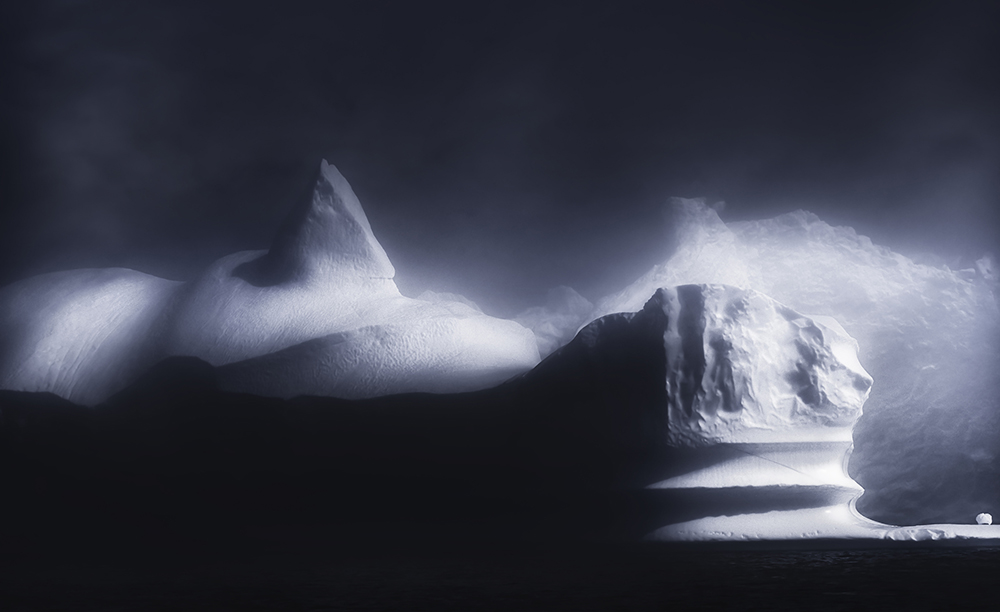In 1871, a group of Norwegian hunters discovered an odd clump in the frozen terrain of far northern Russia, on the island of Nova Zembla—more than 1,000 miles away from any permanent human settlement. What was this icy, gravelly hunk? Art, as it turned out—more than 400 Flemish engravings, the pages fused together like a brick over almost three centuries as the ground surrounding them alternately froze and melted.
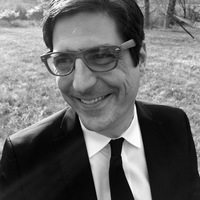
Christopher Heuer, an associate professor of art history at the University of Rochester, is the author of four books on visual culture. Into the White: The Renaissance Arctic and the End of the Image (MIT Press/Zone Books, 2019), is the culmination of Heuer’s long-standing fascination with Renaissance Europe’s preoccupation with the Arctic.
“Not a continent, or an ocean, or a meteorological circumstance, the Arctic forced explorers, writers, and early artists from England, the Netherlands, and Germany to grapple with a different kind of ‘wonder,’” Heuer writes. “The North was unsettling not because of dazzling difference, but because of monotonous sameness. Rather than an Eden, to Renaissance travelers the Arctic was something like the moon.”
The package was a relic of a 1596 expedition to the Far North led by Dutch navigator William Barents, namesake of the Barents Sea. In search of a Northeast Passage to the Indies, Barents and his crew of 17 met with disaster when they were marooned in northern Siberia for more than nine months. Victims of a mistimed voyage, they were trapped as the Arctic waters turned to ice around them.
Amazingly, 12 of the men—though not Barents—outlived the ordeal. When they returned to the Netherlands in late 1597, sailor Gerrit de Veer published an illustrated account of their experience. The book—a memoir of survival in the style of a ship’s logbook, with stories of polar bears, frostbite, Arctic foxes, and the aurora borealis—became “one of the first adventure bestsellers,” says University of Rochester art historian Christopher Heuer. It sent European minds whirring with thoughts of the Arctic. Shakespeare himself may have been referring to the book when he wrote in Twelfth Night of “an icicle on a Dutchman’s beard.” And it was Shakespeare’s London publisher who printed the first English translation of de Veer.
The engravings were meant as merchandise when the expedition reached the Far East. Today they reside in the Rijksmuseum, in Amsterdam, along with other artifacts of the journey, including compasses, medallions, a flute, and a Dutch clock that, de Veer noted, stopped keeping time on November 1, 1596, when the Arctic cold overcame it. Like the engravings, the clock had a transactional purpose. Barents intended it as a gift for the Chinese emperor.
In 1977, Dutch conservators began to tease apart the pages of the engravings, a process of dissolving protein molecules that took more than a year to carry out. The prints, “melded to the earth itself, marooned far from where we normally expect them, physically became part of an Arctic environment,” writes Heuer in his newest book, Into the White: The Renaissance Arctic and the End of the Image (MIT Press/Zone Books, 2019). He focuses on the nexus of art, history, and environment that the phenomenon of Barents’s engravings embodies.
‘Something like the moon’
The European Renaissance’s engagement with the Arctic is a little-known chapter of history but a relevant one today, when the region once again has become a site of anxious attention. When people now think of the Renaissance, they still think about art, Heuer says, and its associations with beauty, richness, and visuality. But the Arctic confronted its early modern visitors with an uneasy emptiness and visual impoverishment, and these, too, were part of the early modern experience.
European explorers of the globe’s southern regions encountered and exploited a dizzying variety of cultures and forms of plant and animal life. They made sense of the “wonders” they found through constant comparison and contrast: the old world and the new, the ‘familiar’ and the ‘exotic.’ The Arctic offered no such easy schema—or even a definable terrain.
“The Arctic is water, it’s air, it’s mist, ice, rock, and dust,” Heuer says. Early explorers struggled to contend with the blankness and menacing ineffability of what they found there.
“Not a continent, or an ocean, or a meteorological circumstance, the Arctic forced explorers, writers, and early artists from England, the Netherlands, and Germany to grapple with a different kind of ‘wonder,’” Heuer writes. “The North was unsettling not because of dazzling difference, but because of monotonous sameness. Rather than an Eden, to Renaissance travelers the Arctic was something like the moon.”
Barents’s crewmen improvised to survive the lunar landscape they found on the island of Nova Zembla, which in later times was the site of a Soviet gulag and a location for thermonuclear testing. With driftwood and pieces of their ship’s hull, they built what de Veer called a “safe house.” Remnants, also discovered in 1871, remain today. The shelter’s construction is carefully documented in de Veer’s book, and the sailors filled it with cargo they’d planned to take to Asia, including songbooks and lamps, struggling to establish a domestic space amidst their hostile surroundings.
De Veer “narrates what was essentially the story of an elaborate staying put,” according to Heuer; “living off meat from trapped Arctic foxes and hunted polar bears, drinking melted snow and rationed wine and beer salvaged from the ship, the crew passed the time tending to the house itself. In essence, they were trying to territorialize an ice desert in conceptual as well as physical terms—to fashion shiplike life atop an unbordered wasteland.”
They feared an environment that threatened not just to overwhelm but to physically envelop them. Whiteout weather and Arctic winter darkness left them blinded and disoriented in relation to space and time. The sailors feared entombment in the ice—much like the fate of the Nova Zembla prints.
Probing the Renaissance mind
From his own four trips to the Arctic Circle, Heuer knows firsthand what he calls “the Arctic threat—and the Arctic norm.” A scholar of Renaissance art who earned his PhD at Berkeley, he joined Rochester’s faculty in 2018 as an associate professor of art history, after a decade of teaching at Columbia and Princeton. His previous books include The City Rehearsed: Object, Architecture, and Print in the Worlds of Hans Vredeman de Vries (Routledge, 2009), Vision and Communism, with Matthew J. Jackson (New Press, 2011), and Ecologies, Agents, Terrains, coauthored with Rebecca Zorach (Yale, 2018). Heuer has long been fascinated by the Renaissance’s preoccupation with the Arctic—and by the discordance of that preoccupation both with how people now understand the early modern world and how we see the Arctic itself.
“Strange trees, wondrous animals, and bountiful waterways—lively things—tend to be the things we talk about when we talk optimistically about a global Renaissance,” Heuer writes. “But naturally dead places were equally important. Put into this light, the lavish story of Renaissance curiosity is just one among many.”
To write Into the White, he made deep dives into early modern travel, scientific, and philosophical writing, bringing to the task his own nuanced understanding of art history. He touches upon indigenous art and art directly inspired by Arctic travel, but his main focus is the influence of ideas about the Arctic on Renaissance minds and the ways European thinking was shaped by perceptions of the Far North. The result is the resurfacing of what Heuer calls a “largely unstudied body of early modern culture and thought.”
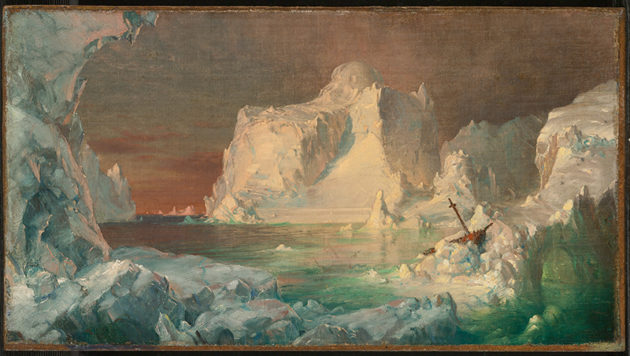
Two main agendas drove Renaissance efforts to explore the Arctic: trade and colonization. For centuries, people had speculated about a northern sea passage that would connect the Atlantic and the Pacific, creating fresh trade routes to Asia. In the Renaissance, they began to search for it.
For the English, there was additional motivation. In the 15th century, the Portuguese had navigated an eastward route to Africa, the beginning of their Atlantic and African empire. The Spanish, in response, began to conquer the southern Atlantic. The Tudor-era English thus turned their sights in colder directions. “There is left one way to discover, which is into the North,” argued one of Henry VIII’s courtiers. Elizabethan England ultimately became the sponsor of much early Arctic exploration.
To envision the Arctic as a place for colonization, the English had to discount all available evidence that settlement there would be excruciatingly hard, if not impossible. Their efforts failed, disastrously, again and again—but their persistence is part of the “quiet history of America,” Heuer argues. The impulses that brought English explorers to the northernmost regions “were the same impulses that brought the Puritans to Massachusetts. It was the idea that absence and blankness and a lack of resources—however imagined—could be a good thing.” Of course, natives had little say in this story.
That viewpoint resonates with Protestant Reformation thinking, he contends, making 16th-century travelers to the Far North well-suited by disposition for the Arctic’s emptiness and incomprehensibility. Physically and metaphorically, followers of the Reformation attacked religious art, taking their cue from the Christian commandment against graven images and other likenesses.
“For the most part, the people who explored the Arctic were Protestant, and they emerged from a culture that acknowledged the unreliability of the visual,” Heuer says. “They mistrusted the idea that devotion has to be something you had to see. Of course, there was no confessional determinism. But there’s a certain strangeness to the idea of the Arctic as a landscape not just of exploitation, but of suspicion.”
It’s an old story in the history of America, he says, calling the Arctic a kind of “Puritan ideal.” In their zeal for austerity, Protestant Reformers stripped art and ornamentation from churches; plain whitewashed walls replaced statues, paintings, altarpieces, and stained glass. Curators of a recent exhibition at London’s Tate Modern gallery, Art Under Attack: Histories of British Iconoclasm, noted that only about 10 percent of medieval art survived England’s Reformation and its civil war of the 1640s. A visitor to a reformed church in Rotterdam during the period commented on its whiteness as a form of absence: “We went to the Great Church, where there is nothing to consider; it is big enough and completely whitewashed on the inside.”
Heuer sees echoes of the Far North in the whitewashed walls. “It’s not like Calvin or Luther were interested in the Arctic, because they weren’t,” he says. “But what they were positing was essentially, the idea of an alternative lifeworld, based on hope, futurity, and togetherness in the face of incomprehensible adversity.”
The Romantic influence
The Reformation conception of the Arctic lingers today, but awkwardly. It’s the mind-set of the 19th century that shapes our thoughts of the Arctic, Heuer maintains—unsullied, sublime, challenging those who arrive in its unforgiving environment to achieve feats of heroism. We remember the quests of William Edward Parry, Charles Francis Hall, Fridtjof Nausen, and later, Roald Amundsen and Robert Peary—if not in name, then in the images of polar exploration that have become iconic and in the landscape paintings by Frederic Edwin Church and others.
Much environmental advocacy today “participates in the mythic sense of Arctic nature as a sanctuary—something pristine and demarcated,” Heuer writes. The 19th-century Romantics and their cultural descendants were confident of human separateness from the Far North—a separateness that made the Arctic environment thrilling and arousing, a place to be conquered in act and in spirit. But the people of the Renaissance saw it differently, he contends. To them, it was always more than a landscape or a physical place—it was an existential crisis.
Many early modern chronicles of exploration include poetry. Hungarian poet Stephen Parmenius sailed to Newfoundland as the official chronicler of an expedition, ultimately drowning there. He had planned to write an epic poem in Latin about the New World. But in a 1583 letter, he asked, “What shall I say . . . when I see nothing but solitude?”
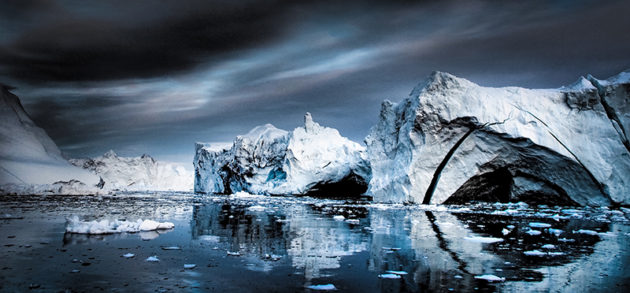
Although, as an art historian, Heuer’s interest is how we see the Arctic, how we see it has implications for how we treat it. He’s wary of thinking inflected by Romantic awe. He argues that art has an essential place in developing a holistic view of the earth’s northernmost region. In the Renaissance, science and art weren’t intellectually divided, as they are now. “The same poets who would go to the Arctic and write poems about icebergs were also concerned with climate data or the depth sounding of places. Those two realms were just not separable in the early modern moment,” he says.
In some countries, they’re still not. Heuer has visited a Scandinavian research station that houses both scientists and artists, viewing them as partners in research. The Soviets took musicians, writers, and teachers to its research stations. “Data and poetry, these are the two ways we understand the Arctic. They need to talk to one another,” says Heuer. “And they did at one time—they really did.”
Such understanding has become more important than ever. Whatever their views of the northern terrain, the people of the Renaissance and those of the 19th century had to seek out their encounters with the Arctic. When de Veer and his fellow crewmen took to the thawing waters around Nova Zembla in open boats, eventually rescued weeks later by a Dutch merchant vessel, they left the Arctic behind them as they returned to the Netherlands. We have no such luxury now, says Heuer. No longer does the ice await its visitors. Melting, raising the oceans’ waters, it reaches out.
“The Arctic,” writes Heuer, “is coming for you.”
Rochester Readings
Explore other recent books by University of Rochester faculty members.
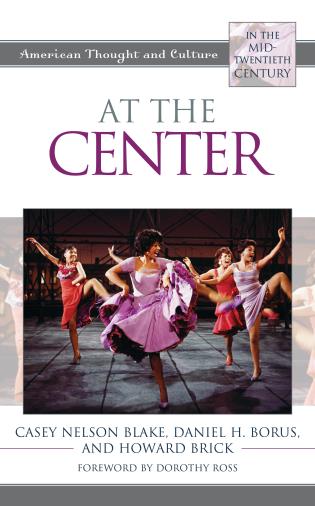 At the Center: American Thought and Culture in the Mid-Twentieth Century
At the Center: American Thought and Culture in the Mid-Twentieth Century
By Case Nelson Blake ’87 (PhD), Daniel Borus, and Howard Brick
Rowman & Littlefield, 2020
The authors present a survey of thought and culture in the United States when the nation newly understood itself to be “at the center of world awareness.” They demonstrate how a wide range of familiar as well as lesser-known figures in media, politics, literature, and the arts undertook a search for “centeredness” in the form of fundamental, universal, and holistic ideas, moral standards, and practices to ensure stability in the aftermath of war and genocide. Borus is a professor emeritus of history at Rochester, Blake is the Mendelson Family Professor of American Studies at Columbia University, and Brick is the Louis Evans Professor of History at the University of Michigan.
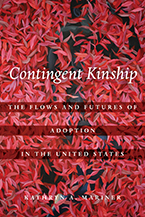 Contingent Kinship: The Flows and Futures of Adoption in the United States
Contingent Kinship: The Flows and Futures of Adoption in the United States
By Kathryn Mariner
University of California Press, 2019
Mariner explores the dynamics of transracial adoption, with a focus on the role of adoption agency workers in negotiating relationships between expectant mothers and prospective adopters. Mariner, who carried out the research at a Chicago agency specializing in transracial adoption, holds the title of Wilmot Assistant Professor of Anthropology and Visual and Cultural Studies at Rochester.
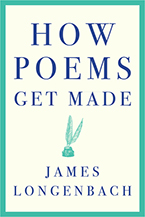 How Poems Get Made
How Poems Get Made
By James Longenbach
W. W. Norton, 2018
Poems in English are “sonic dramas,” writes Longenbach, a noted poet and the Joseph Henry Gilmore Professor of English at Rochester. Poets use the sound of the language to create the motion and meaning of their verse, through such basic elements as diction, syntax, rhythm, and figuration.
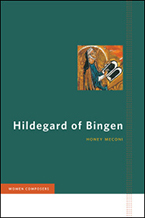
Hildegard of Bingen
By Honey Meconi
University of Illinois Press, 2018
Meconi, chair and professor of music in the College music department and professor of musicology at the Eastman School of Music, explores the life and work of the noted medieval composer and theologian. The book is part of the publisher’s Women Composers series.

The World Health Organization: A History
By Marcos Cueto, Theodore Brown, and Elizabeth Fee
Cambridge University Press, 2019
Three historians of medicine—including Brown, a professor emeritus of history and of medical humanities at Rochester—provide an overview of the 70-year history of the global health organization, highlighting its major achievements and internal tensions.

